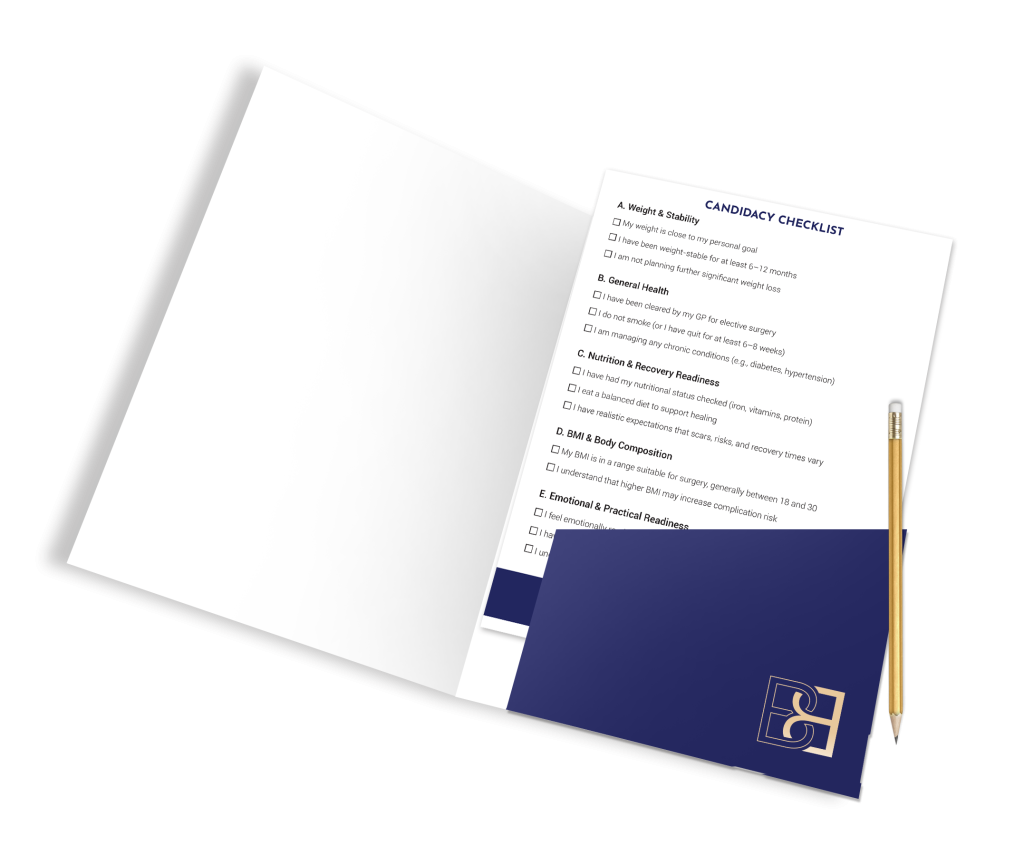Lower Torso Surgery After Significant Weight Loss
Book Online NowAfter significant weight loss – whether through bariatric surgery, lifestyle changes, or medically supervised weight-loss medications – some patients may find that the skin does not always retract fully. This can leave excess skin or skin laxity in the lower torso, including the lower abdomen, waistline, flanks, back, and buttocks.
This page is an overview I’ve written to guide you through the different options available. If you’d like more detail, you can explore the individual procedure pages linked from here.
Why Patients Consider Lower Torso Surgery
After major weight loss, the skin may not have the elasticity to reshape itself to a smaller body size. This can leave behind redundant skin and skin folds. Many of my patients who have reached their goal weight or have undergone bariatric surgery come to me with concerns such as:
- Excess skin and fat (adipose tissue) around the abdomen and waistline
- Skin infections or rashes in skin folds
- Difficulty with hygiene and clothing fit
- Movement restrictions or discomfort
- Risk of poor wound healing in certain areas
These are concerns that may affect daily life. Surgery may be an option to remove excess skin and treat these issues. My role is to assess your situation carefully and discuss which body contouring procedures may be appropriate for you.
Maintaining a healthy lifestyle and healthy diet is always important. Surgery isn’t a substitute for weight loss – it’s about treating the remaining skin that can’t be changed by diet and exercise alone.
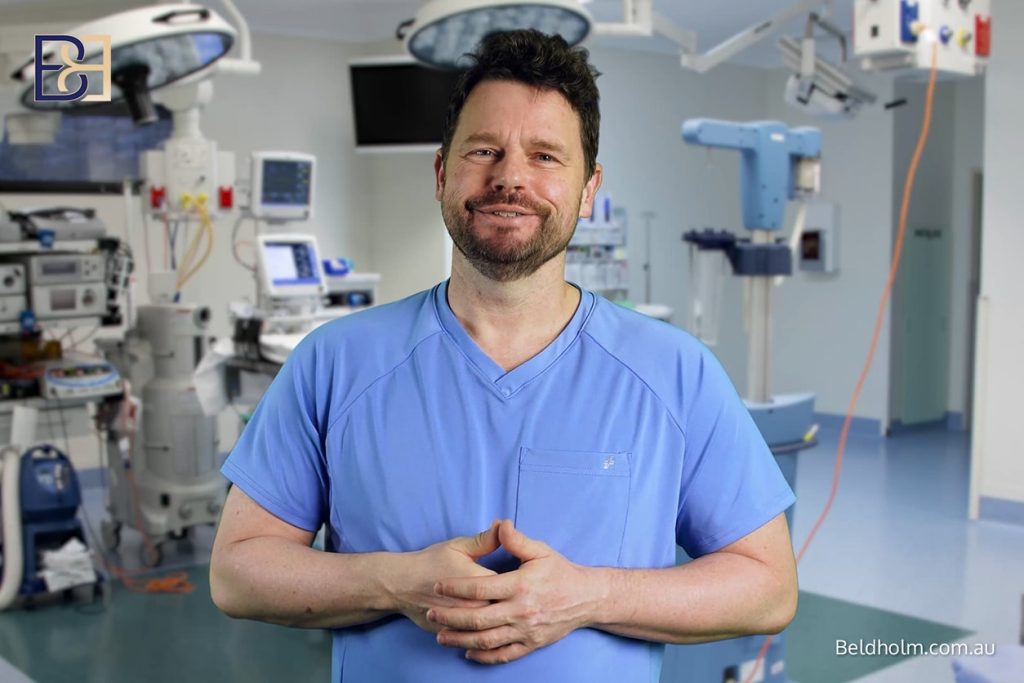
What to Expect With Me, Dr Bernard Beldholm FRACS, Specialist Surgeon
When you book a consultation with me, I’ll usually spend about one hour with you in the initial appointment. During this time, I’ll review your medical history, perform a physical examination, take photographs, and explain the options available. I encourage all of my patients to come back for a second consultation before making a final decision – this gives you the chance to reflect and have your questions answered.
My patient coordinator will prepare a written quote for you, which includes surgical fees, any applicable MBS item numbers, hospital fees, and anaesthetist costs. This way, you’ll know the likely costs before you decide whether to proceed.
Book Online NowWho is a Candidate?
Before considering surgery, there are a few important things we look at together:
- Stable Weight: You will need to have been at a stable weight for at least 6 months to access the post weight loss MBS item numbers. However, I generally recommend that you have maintained a stable weight for at least 12 months. This usually means your skin has had time to adjust naturally.
- Body Mass Index (BMI): There’s no single cut-off, but BMI helps guide suitability. In my experience, patients who are closer to normal weight or only slightly overweight (BMI 18 to 30) will generally achieve the best results from body contouring surgery. If there is a significant amount of excess adipose tissue, this may limit the result I can achieve. Surgery only treats excess skin and fat on the outside – it won’t treat internal fat.
- MBS Eligibility: Medicare item numbers may apply if you’ve lost at least 5 BMI units, maintained a stable weight, and have functional issues such as rashes or movement problems.
- Medical History: Your overall health and how your body heals are important in planning your surgery.
- Realistic Expectations: Surgery may reduce functional problems, but it does leave scars. I’ll explain this clearly so you can make an informed decision.
- Recovery and Complications: All surgery carries potential complications. These can include wound issues, infection, bleeding, or delayed healing. It can take several months before most patients feel back to their normal routines. Recovery times vary, and it is important to plan for support during the early period after surgery.
Types of Lower Torso Surgery
Abdominoplasty
Removes excess skin from the lower abdomen. In many cases, this may also include reinforcing the abdominal wall, repairing abdominal muscles, and correcting abdominal muscle separation (diastasis recti).
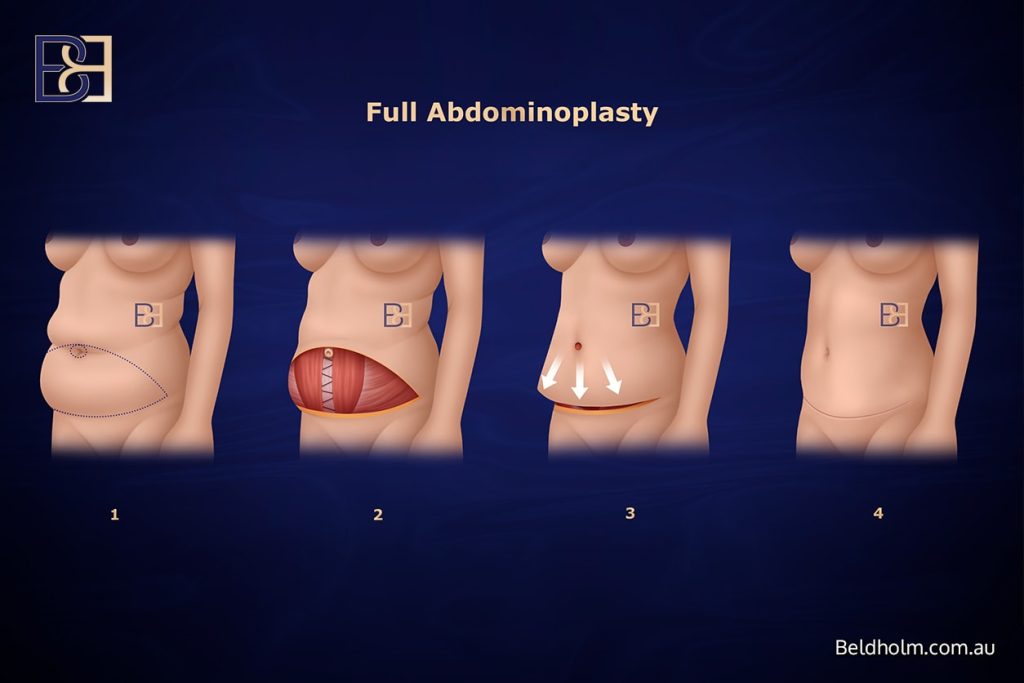
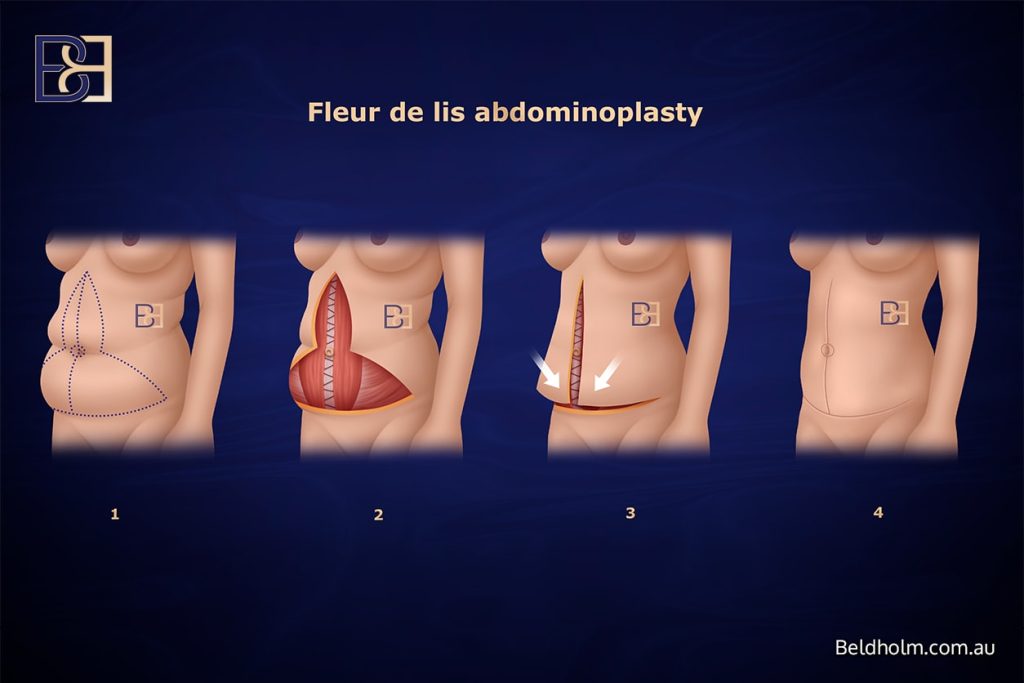
Fleur-de-Lis Abdominoplasty
Removes both horizontal and vertical sections of redundant skin, often suitable for patients with more significant skin laxity after massive weight loss.
Circumferential Lipectomy
A 360° procedure that addresses the lower abdomen, flanks, back, buttocks, and outer thighs. This is often an option for people who have undergone massive weight loss, particularly if there is loose skin in the vertical direction surrounding the lower torso.
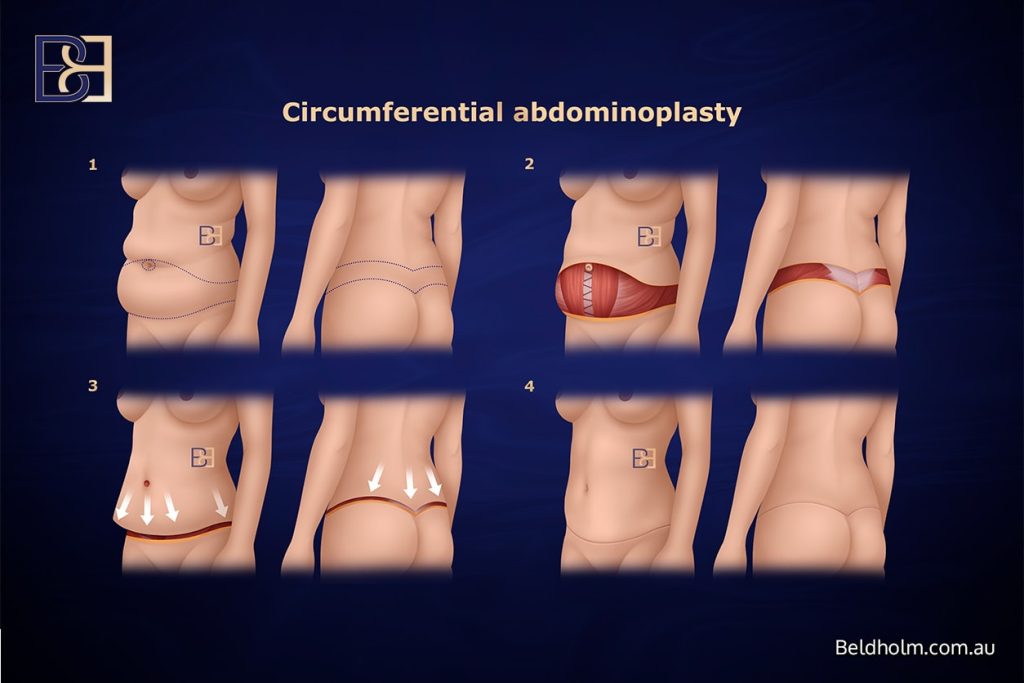
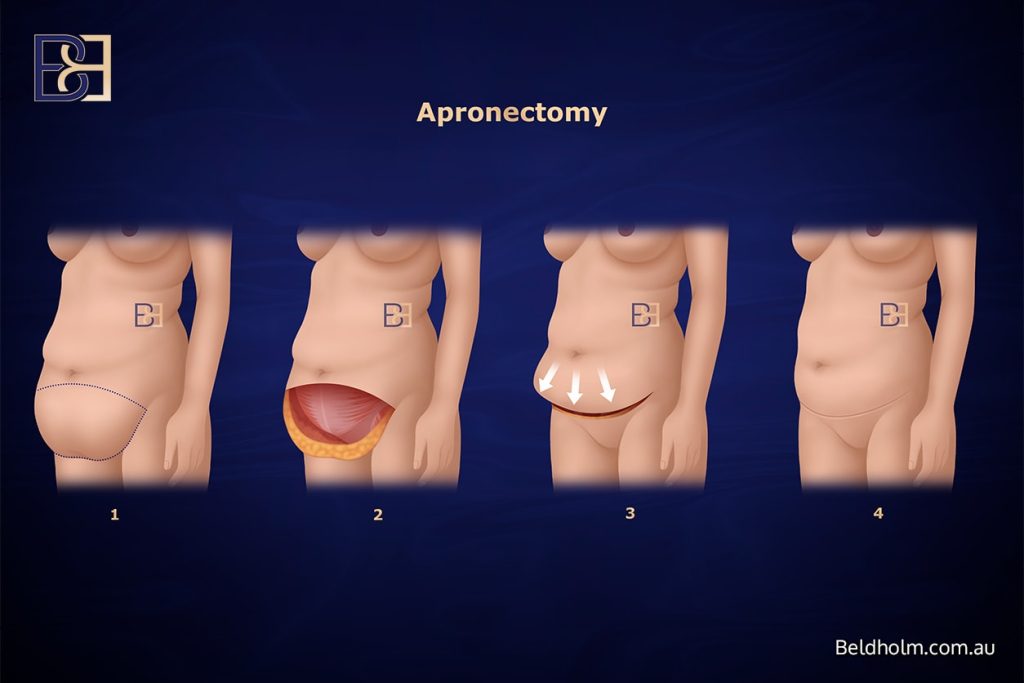
Apronectomy (Panniculectomy)
Focuses on removing an overhanging apron of excess skin without repositioning the belly button. This can be considered for patients who have rashes or discomfort in the lower fold.
Gluteal lift (Gluteal/Buttock Resection)
Removes excess skin and fat across the lower back and can elevate the buttocks. This procedure may be performed as a separate operation, or in some cases combined approaches are considered. When combined with abdominoplasty it is essentially the same as a circumferential abdominoplasty, and this will be discussed in consultation if appropriate.
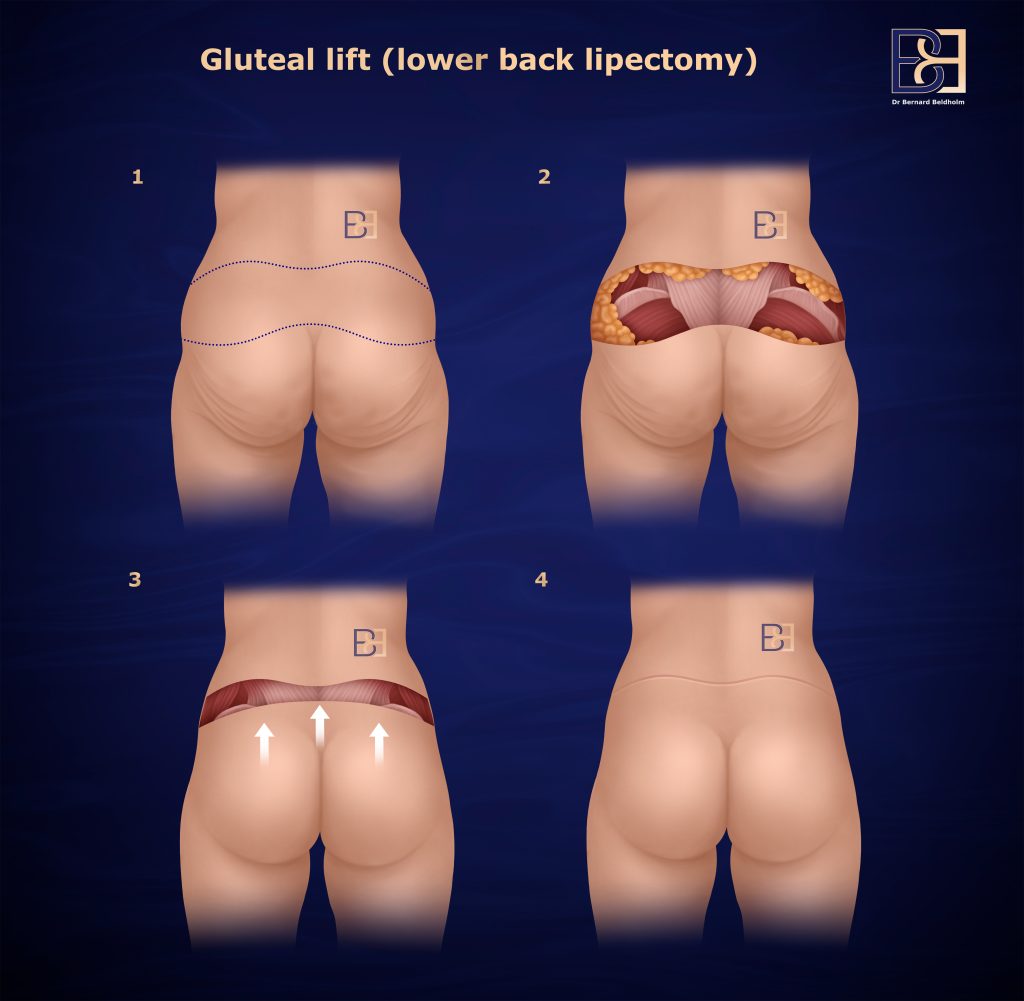
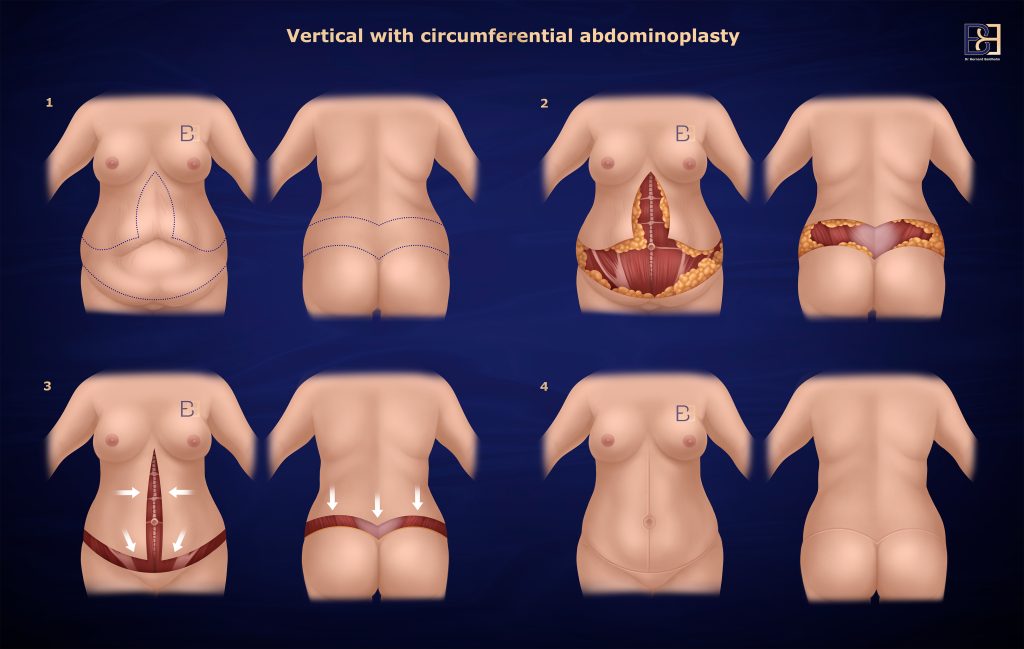
Anterior Abdominal Vertical Skin Excision + Circumferential Lipectomy
This operation is essentially a combination of the fleur-de-lis abdominoplasty with a circumferential abdominoplasty. It treats both vertical and horizontal excess skin on the anterior abdomen, as well as loose skin on the sides and back areas.
Fleur-de-Lis Abdominoplasty + Upper Abdominal Lipectomy
Combines the fleur-de-lis with additional excision in the upper abdomen for broader treatment.
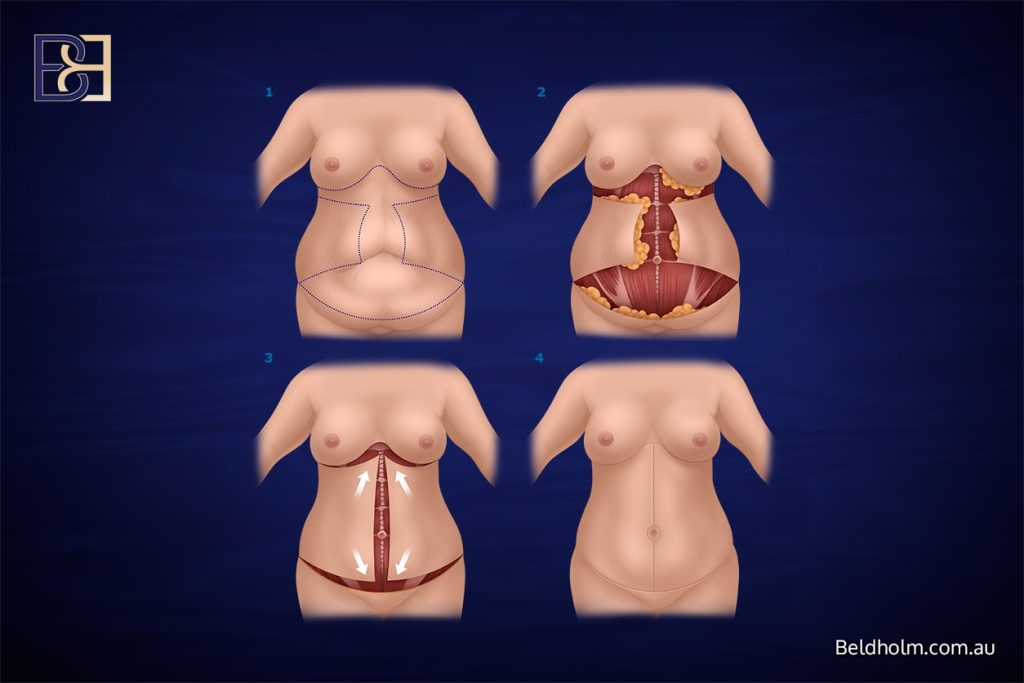
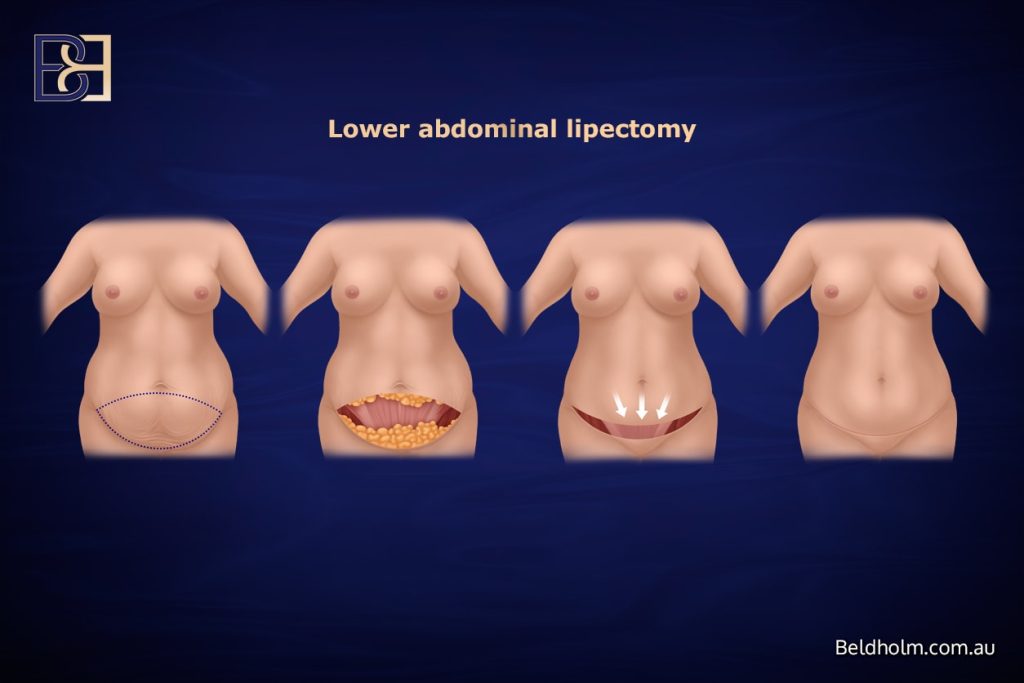
Upper + Lower Abdominal Lipectomy (No Umbilical Repositioning)
Removes extra skin above and below the belly button without detaching or repositioning it.
Combining Procedures
Sometimes, patients choose to combine lower torso surgery with other body contouring procedures, such as:
- Mastopexy (breast lift) or other breast surgery
- Thighplasty (thigh lift) for the inner thigh
- Brachioplasty (arm lifts) for the upper arms
- Upper torsoplasty for the chest and back
Whether these are done together or staged over time depends on your safety, your medical history, and what you want to achieve.
Risks, Recovery & Healing
Every surgery has risks. For these procedures, risks can include:
- Bleeding or infection
- Surgical complications
- Poor wound healing or delayed recovery
- Severe pain in the early days
Recovery usually involves:
- A short hospital stay and follow-up care
- Wearing compression garments to support healing
- Gradually returning to normal activities
- Managing scars as they heal
I’ll talk through all of this with you in detail during your consultations. I personally review you while you are in hospital, and my team and I will see you frequently in the first weeks after surgery to monitor your recovery.
Insurance & Costs

- Some procedures may qualify for MBS item numbers if you meet the criteria.
- Private health insurance can sometimes help cover hospital costs when an MBS number applies. Most of these MBS item numbers are included in Gold or top-level cover, usually grouped in the same band as bariatric surgery. Some private health funds may refer to them as weight-loss related surgeries. Every health fund is different, so it is important to check your own level of cover.
- If your operation is cosmetic with no MBS item number, then you will not be able to use your private health fund. You will be out of pocket for hospital, anaesthetist, and surgeon fees. You will also need to pay 10% GST on the cost of each of these.
I’ll explain how your circumstances relate to eligibility, and my patient coordinator will provide a detailed quote before you make any decisions.
Frequently Asked Questions
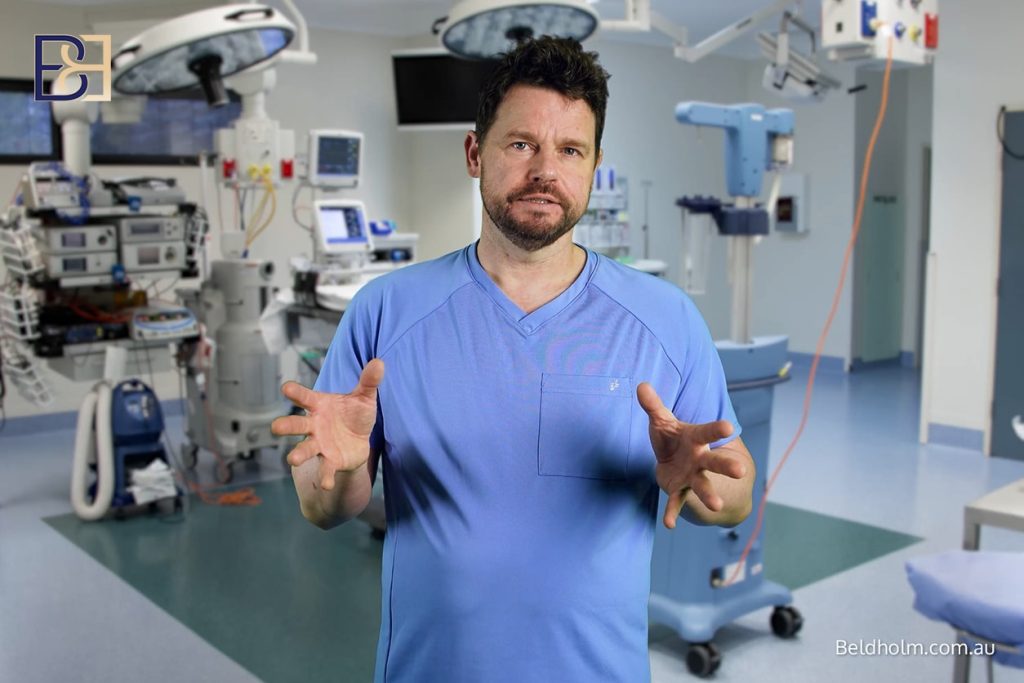
Can you treat skin laxity after weight loss?
In many cases, surgery is often considered an effective option to remove excess skin after major weight loss. Non-surgical methods may help maintain skin elasticity, but they generally do not remove large folds of skin.
What is the BMI cut off for abdominoplasty?
There’s no strict cut-off. Lower BMI levels are generally better for surgery. In my experience, patients who are closer to normal weight or only slightly overweight (BMI 18 to 30) will generally achieve better results from body contouring surgery. If there is a significant amount of excess adipose tissue, this may limit the result I can achieve. Medicare eligibility requires that you’ve reduced your BMI by at least 5 units after weight loss surgery or lifestyle change.
Do you need skin removal surgery after weight loss?
Not everyone does. Some people have good skin elasticity and less remaining skin. Others, especially those who have undergone bariatric surgery, may consider operations such as abdominoplasty or lipectomy.
What is the most appropriate surgery after weight loss?
It depends on the areas most affected. For the lower torso, an abdominoplasty or circumferential lipectomy are common. For the upper body, a mastopexy, torsoplasty, or brachioplasty may be options. The most appropriate procedure is individual – we’ll discuss what best matches your goals, body shape, and medical history.
Dr Beldholm’s Final Thoughts
Lower torso surgery after significant weight loss is about providing surgical options for individuals after significant weight loss. These procedures can remove excess skin and treat the functional concerns it may cause. They’re not weight-loss operations – rather, they are a way to manage changes that remain after weight loss.
If you’re thinking about surgery, I, Dr Bernard Beldholm FRACS, Specialist Surgeon, am here to guide you through the options, talk honestly about risks and recovery, and support you in making the decision that feels right for you.

